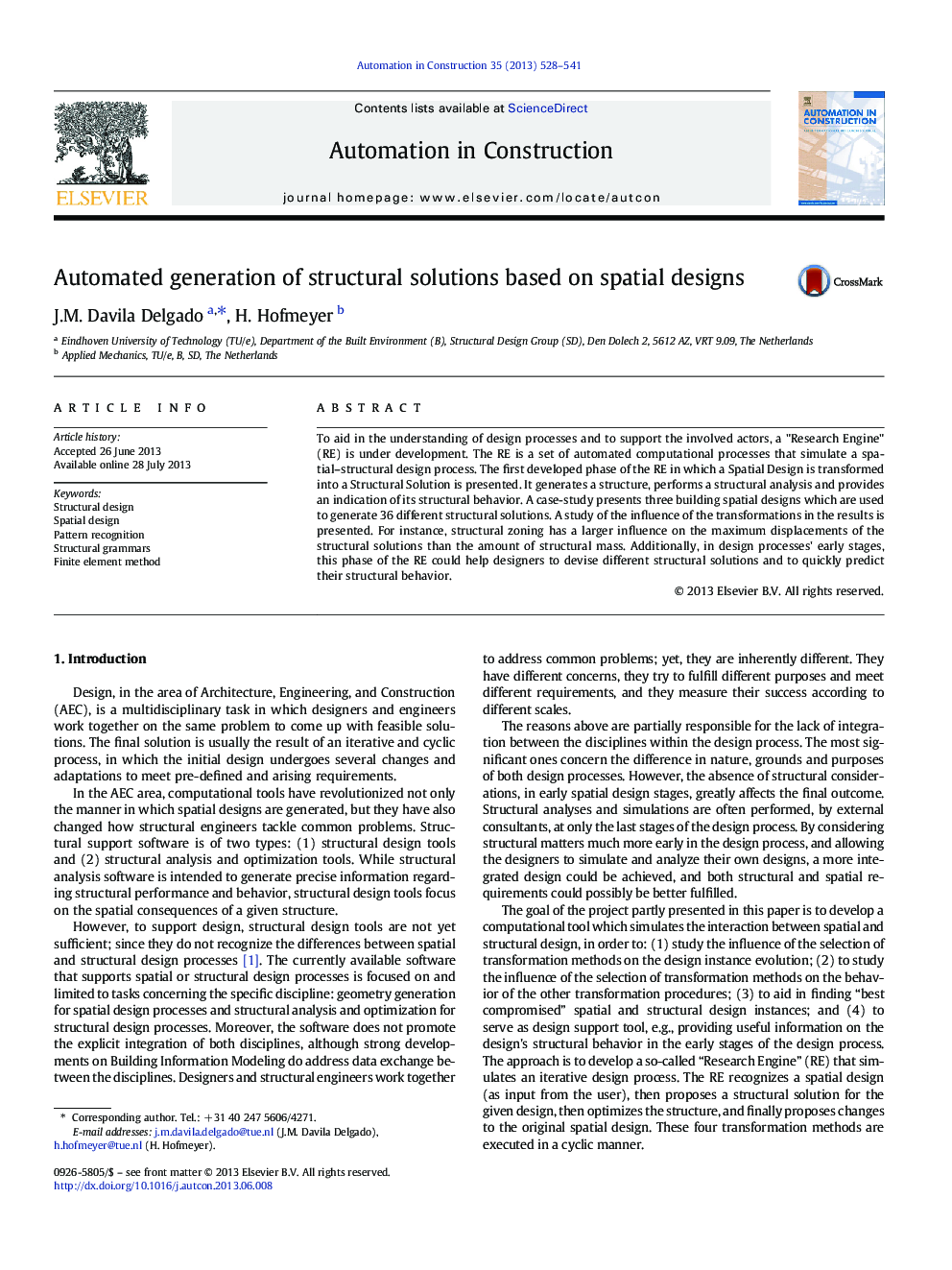| Article ID | Journal | Published Year | Pages | File Type |
|---|---|---|---|---|
| 246650 | Automation in Construction | 2013 | 14 Pages |
•A framework for developing a so-called “Research Engine” (RE) is presented.•It aids in the study of design processes and supports the involved actors.•Three spatial designs are used to generate 36 different structural solutions.•Zoning has a larger influence on maximum displacements than structural mass.•The RE's capabilities to support conceptual structural design are demonstrated.
To aid in the understanding of design processes and to support the involved actors, a "Research Engine" (RE) is under development. The RE is a set of automated computational processes that simulate a spatial–structural design process. The first developed phase of the RE in which a Spatial Design is transformed into a Structural Solution is presented. It generates a structure, performs a structural analysis and provides an indication of its structural behavior. A case-study presents three building spatial designs which are used to generate 36 different structural solutions. A study of the influence of the transformations in the results is presented. For instance, structural zoning has a larger influence on the maximum displacements of the structural solutions than the amount of structural mass. Additionally, in design processes' early stages, this phase of the RE could help designers to devise different structural solutions and to quickly predict their structural behavior.
